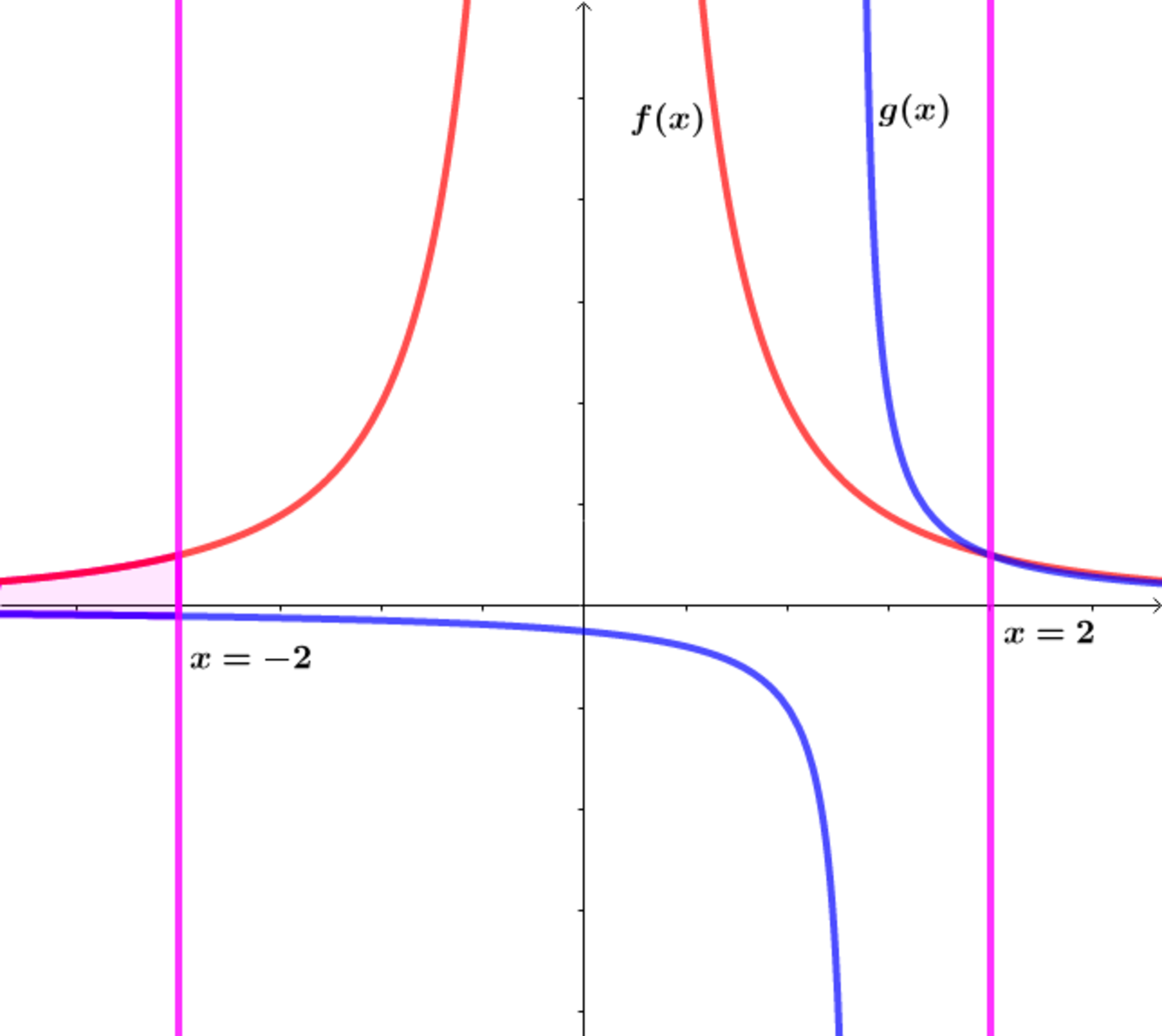Volume Of Solids of Revolution

Let be a positive integer and .
Let and .
Let be the volume of the region formed when the curve is revolved about the -axis on and be the volume of the region formed when the curve is revolved about the -axis on
If and and the volume of the region bounded by the curves and when revolved about the -axis on can be expressed as , where and are coprime positive integers, find .
I used for the above graph.
The answer is 6.
This section requires Javascript.
You are seeing this because something didn't load right. We suggest you, (a) try
refreshing the page, (b) enabling javascript if it is disabled on your browser and,
finally, (c)
loading the
non-javascript version of this page
. We're sorry about the hassle.
Let ∣ x ∣ > 1 .
f ( x ) = ∑ j = 0 ∞ x β + j ∗ x β + j + 1 x β + j + 1 − x β + j = ∑ j = 0 ∞ x 2 ( β + j ) ∗ x x β + j ( x − 1 ) = x β + 1 x − 1 ∑ j = 0 ∞ ( x 1 ) j = ( x β + 1 x − 1 ) ( x − 1 x ) = x β 1
Let g ( x ) = a x + b 1 .
f ( 2 ) = g ( 2 ) ⟹ 2 a + b = 2 β
V f = π ∫ 2 ∞ ( f ( x ) ) 2 d x = π ∫ 2 ∞ x − 2 β d x = − 2 β − 1 π ( x 2 β − 1 1 ) ∣ 2 ∞ = ( 2 β − 1 ) 2 2 β − 1 π
⟹ ( 2 β − 1 ) 2 2 β − 1 π = V g = π ∫ ( g ( x ) ) 2 d x = a π ∫ 2 ∞ ( a x + b ) − 2 ∗ a d x = − a π ( a x + b 1 ) ∣ 2 ∞ = a ( 2 a + b ) π
⟹ a ( 2 a + b ) = ( 2 β − 1 ) 2 2 β − 1
and
2 a + b = 2 β
Solving the system we obtain:
a = ( 2 β − 1 ) 2 β − 1 and b = 2 β + 1 ( 1 − β ) ⟹ g ( x ) = 2 β − 1 ( ( 2 β − 1 ) x − 4 ( β − 1 ) ) 1
V 1 ( β ) = π ∫ − ∞ − 2 ( f ( x ) ) 2 d x = ( 2 β − 1 ) 2 2 β − 1 π
and
V 2 ( β ) = π ∫ − ∞ − 2 ( g ( x ) ) 2 d x = − a π ( a x + b 1 ) ∣ 2 ∞ = a ( 2 a − b ) π = ( 2 β − 1 ) 2 2 β − 1 ( 4 β − 3 ) π
⟹ V 1 ( β ) − V 2 ( β ) = ( 2 β − 1 ) ( 4 β − 3 ) 2 2 β − 1 4 ( β − 1 ) π = ( 2 β − 1 ) ( 2 2 β − 3 ) 2 2 β − 1 2 2 ( β − 1 ) π = ( α β − w ) ( α α β − λ ) ( α α β − w ) α α ( β − w ) π ⟹ α + w + λ = 6 .
Note: For β = 2 ⟹ f ( x ) = x 2 1 and g ( x ) = 6 x − 8 1 ⟹ V 1 ( 2 ) − V 2 ( 2 ) = 3 0 π .
For β = 3 ⟹ f ( x ) = x 3 1 and g ( x ) = 2 0 x − 3 2 1 ⟹ V 1 ( 3 ) − V 2 ( 3 ) = 1 8 0 π .
For trivial case β = 1 ⟹ f ( x ) = g ( x ) = 1 / x and V 1 ( 1 ) = V 2 ( 1 ) = 2 π .